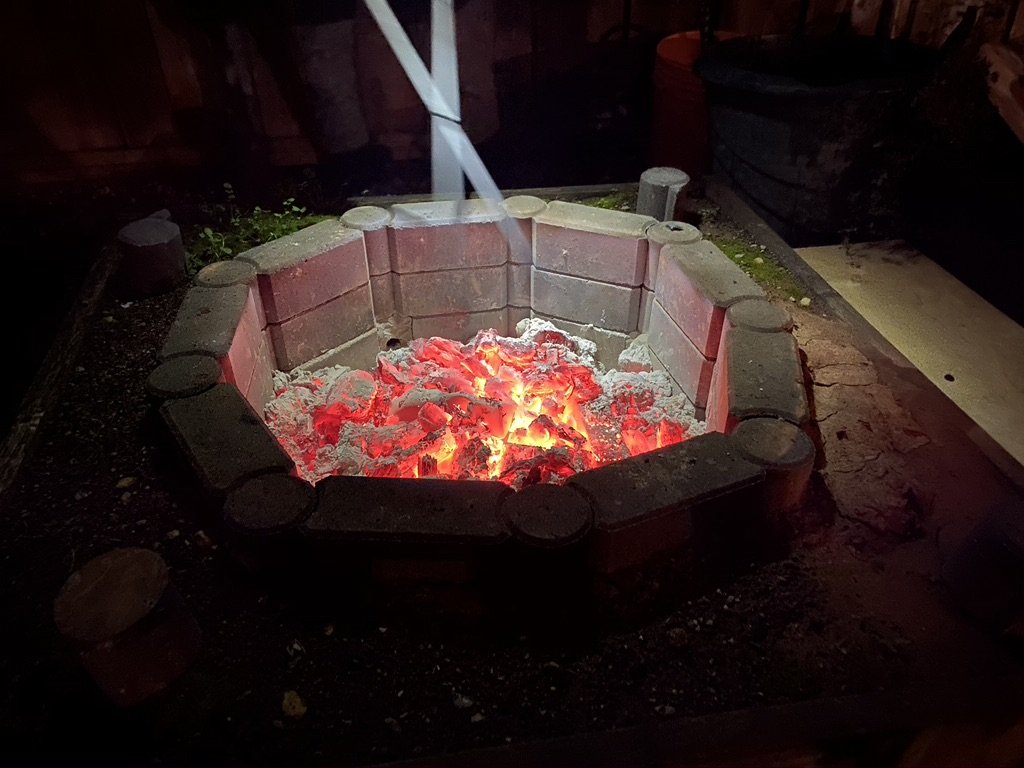Obvara. A practice that has been typical of villages from the Baltics, Belarus and Russia, down through to Turkey, since the middle ages. The cornerstone of the Obvara process is the fermentation of a mixture of flour and yeast. I fire the pieces twice during the last 1.5 days of fermentation. 10 hours into the second firing, pieces are removed from my in-the-ground charcoal kiln at around 800-900°C, immersed in the fermentation and then transferred into water to cool. As the pieces are moved between liquids, exposed to the open air, the fermentation encasing each piece transforms and leaves behind a gorgeous effect. This practice has a rich history and its application has been astoundingly versatile and impressive.
The following is an excerpt from an article written by potter Janice Chassier (2015):
“Little has been documented on the Obvara firing technique. It is only through ethnographic sources that details have been revealed, since the techniques were passed down from generation to generation. In ancient times, before indoor plumbing, a bucket was placed near the sink to hold kitchen scraps and waste water. Each home would have its own kitchen waste which could include water from boiled potatoes, old milk, beet juice, sauerkraut, crushed plants from milling flour and herbs. These scraps fermented, making an acidic mixture with fine particles suspended in the mixture. Some believe the Obvara technique may have resulted from an accident when a hot pot fell into the bucket of fermented kitchen scraps; patterns were made on the pot where the hot ceramic touched the fermented liquid, and the Obvara firing process was born. Obvara has never been mass produced, but instead was made in villages that were isolated from civilisation. It was used to make inexpensive cookware and to minimise porosity. Master potters of Obvara make pottery with rounded patches of natural ochre, brown and black, resembling many eyes. According to ancient beliefs, these 'eyes' protected the food their pots held from evil spirits, and people believed that food prepared in this pottery tasted better. Foods in these pots could be roasted without adding oil, preserving its natural nutritional value. Obvara ware absorbs moisture, so baked goods had a delicious, crusty top. The pottery was porous, so each dish was used specifically for one kind of food to prevent cross contamination. After each use it was essential to burn the pot to eliminate odours and bacteria. Obvara ware was used to preserve grains and flours, as people believed that bugs did not live in these pots. Obvara ware preserved the temperature of the food for a longer time; milk stayed cooler, while roasted meats and fish stayed warmer longer. This six century old tradition was almost forgotten when people had enough income for the newer technology of glazed ceramics.”
The history of Obvara is incredibly interesting and definitely worthy of further reading. There is currently a resurgence of appreciation for Obvara being led by potters in Eastern Europe, who are in part trying to preserve and re-discover the local knowledges that were commonly endangered or lost in the last century.
To learn more about how the Obvara practice is developing, you can click on the links below:
http://neue-keramik.de/wp/wp-content/uploads/2016/05/NK-2015-01-en.pdf (Page 54)
https://toscateran.com/portfolio/korpulfsstadir-residency/
Chassier, J. (2015). Obvara. Ceramics Technical, No. 40, June, 52-57.


